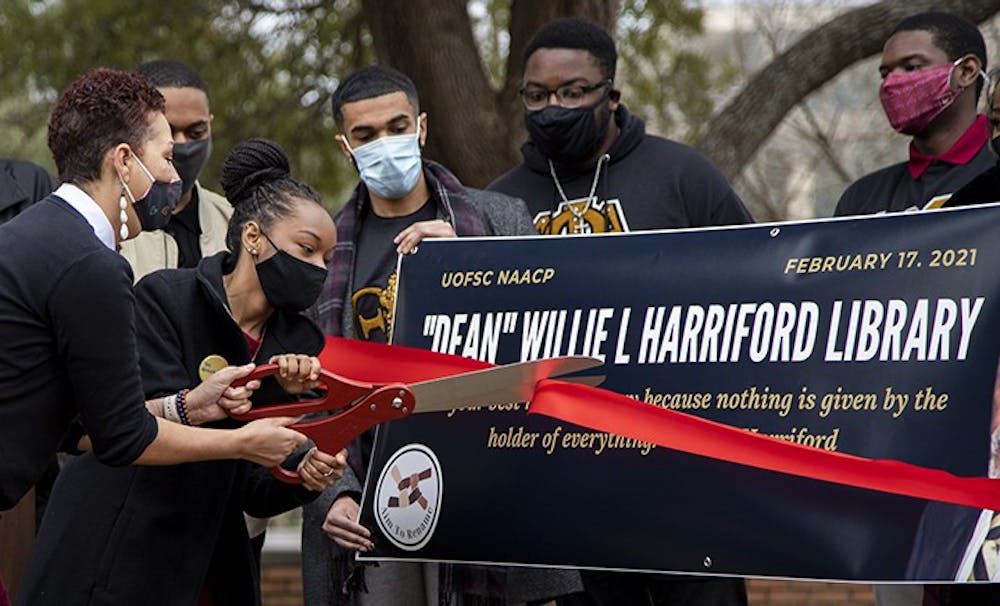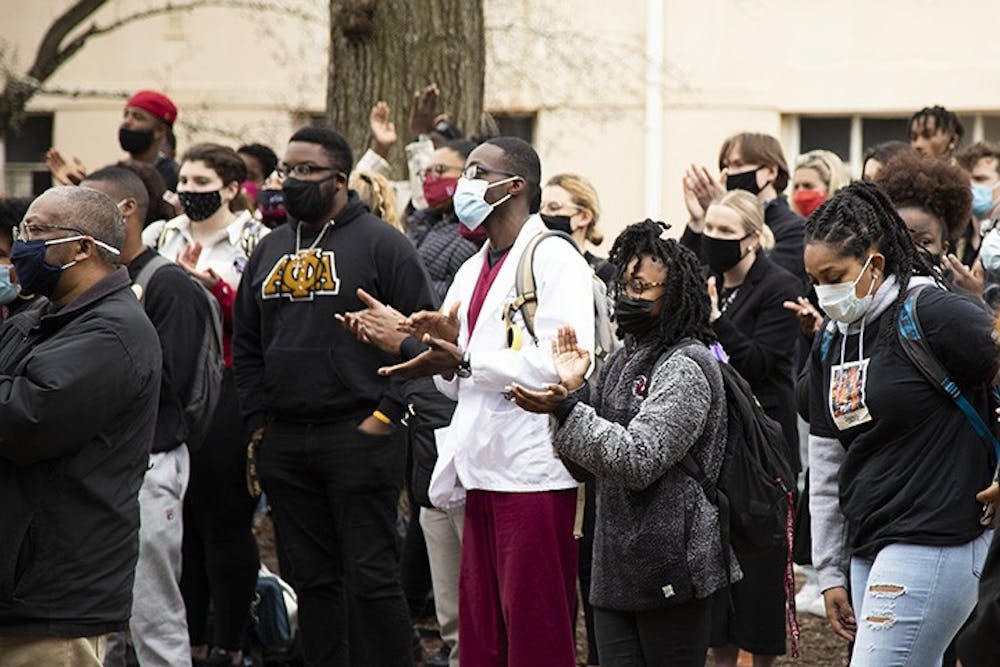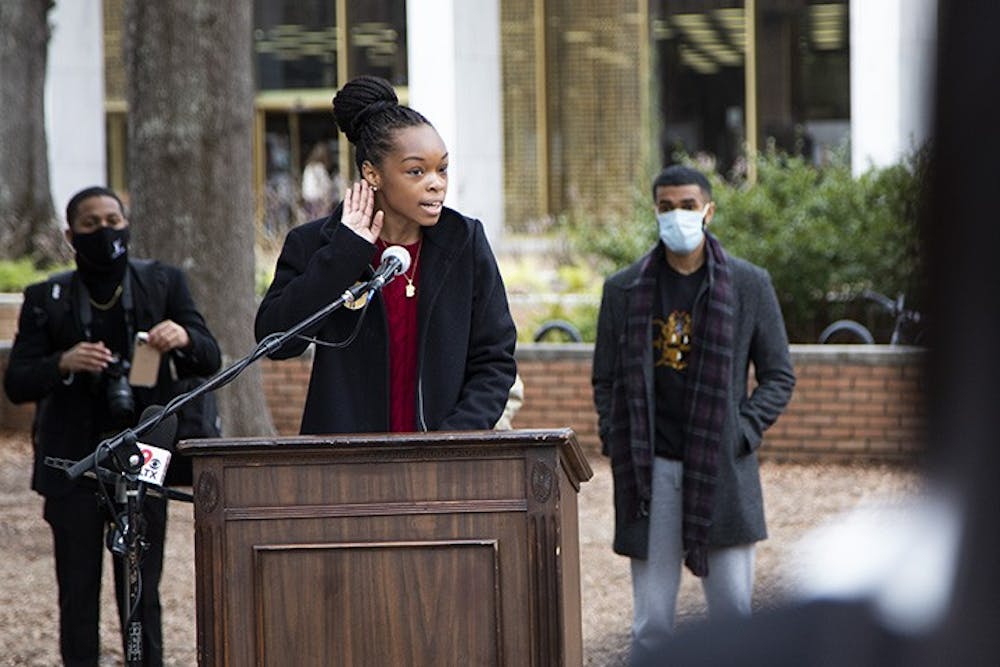A group of university students recently reactivated USC's chapter of the NAACP after a four-year period of inactivity. Its first event on campus was the Aim to Rename press conference earlier this month, where the organization gave a self-chosen name, “Dean” Willie L. Harriford, to the Thomas Cooper Library.

The NAACP also demanded several other buildings on campus get renamed. According to chapter President Caley Bright, the organization received good feedback from the community after the event.
“I think we got a lot of publicity that our chapter needed, and also that this movement needed, so it helped out in both ways,” Bright, a first-year criminology and criminal justice student, said.
A group of several Black student organization leaders on campus gathered over Zoom before the event to research and brainstorm alternate names for buildings whose namesakes have racist pasts, Bright said.
Bright said the organization will continue to push the university to make renaming buildings a priority. According to chapter presidential adviser Robert Morris, the event was an extension of a larger movement and not just a celebration of Black History Month.
“We’re doing this because it’s been a fight that has been happening for years, and so we don’t want the same thing to happen that has happened before, where they kind of just wait us out until we graduate,” Morris, a second-year mechanical engineering student, said. “So, we’re just going to continue to fight and be persistent and consistent, and hopefully they will keep hearing us and start to change things.”
Bright said she started working on reinstating the NAACP chapter at USC when Student Government secretary of inclusion and equity Reylan Cook brought it up. Over winter break, Bright and Morris worked with NAACP nationals to verify the chapter.
Since the Aim to Rename press conference, the NAACP has “hit the ground running,” according to chapter Vice President Krishna Alexander. Students have messaged the chapter on Instagram asking how to join, providing their support and donating.
“We would have never imagined having this kind of impact or publicity with the NAACP this soon, this early,” Morris said.
The NAACP is now focusing on membership recruitment and development, Morris said. The organization has a table on Greene Street during Hip Hop Wednesday every week, and the chapter had around 40 members present during its last meeting.
Social media and communications chair Raelin Lanham said the large number of underclassmen in the NAACP, especially in executive positions, helps ensure the organization will stay active on campus for many years to come.
“We’re here to stay. We’re not going anywhere,” Lanham, a first-year exercise science student, said.
The NAACP chapter also wants to focus heavily on community service in and around the Columbia area, but it doesn’t currently have any events planned, according to Bright.
Morris said there is a common misconception that the NAACP is only open to African American students on campus, when in reality, it “represents all types of underrepresented communities.”

“The organization in itself was created to eliminate discrimination ... the way to do that is to include everybody because if we look at it from a one-sided perspective, we’re just going to keep growing [in] a one-sided direction,” Alexander, a first-year political science student, said.
According to Bright, although the chapter has a lot of work to do, the NAACP’s long-term goal at the university is “to be the central, core organization that helps students deal with inclusion and equity on this campus."
“When you’re loud, and when you command attention, people start listening, and I feel like NAACP motivates everyone to be an organization that can actually make change,” Bright said.

